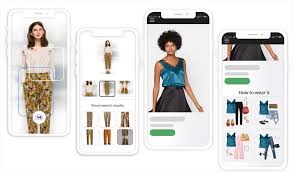The industry of fashion is estimated to be worth $3.3 trillion by 2030, but little has changed in the past 20 years. The emergence of social media has trained customers to demand instant gratification and instant access to the latest trends. Mass-produced clothing has lost its appeal, and younger consumers are seeking more personalized products. The next big thing for fashion brands is to adapt new technologies that will make their clothes more durable and wearable. This article aims to explore the newest innovations in fashion technology and how they could benefit your business.
The fashion technology field requires a thorough understanding of fabric and design techniques. The field requires students to understand the latest trends and to appreciate fabrics. Several other important skills include sourcing, buying, storing and designing. The job is highly rewarding and requires mobility and dexterity. To be successful in this industry, students must have a strong understanding of the latest trends and understand how to create them. The fashion technology career field has many facets and is both diverse and rewarding.
In terms of innovation, the fashion industry has always been at the forefront. Pioneering sewing machines led to efficient supply chains and early ventures into e-commerce. Today, more than ever, fashion technology is improving clothing and lives. Many companies are making a conscious effort to pay a living wage to all involved. And they are paying attention to the environmental impact of clothing production. They are also responding to consumer demands for ethical fashion. The future of fashion technology is bright! And there are many opportunities for the industry to capitalize on.
Blockchain technology can help the fashion industry keep track of inventory, supply chains, and production. With this technology, each product can have a unique digital ID. This is a huge help in tracking the journey of raw materials through supply chains. It can also help brands ensure that every item is safe from counterfeiting. With the help of blockchain, fashion companies can ensure greater transparency and efficiency in the industry. The blockchain technology also helps to trace clothing in the most accurate way possible.
Artificial intelligence (AI) can help brands identify wider trends. AI data can also guide the design of labels and products. Another example of this technology is True Fit, an app for shoppers that offers intelligent clothing recommendations based on a user’s body shape and lifestyle. True Fit’s data mining of transactional data from its 180 million registered users enables them to personalize the consumer journey across all touch points. It is also possible for retailers to implement similar technology into their business.
The use of artificial intelligence (AI) in the fashion industry can be beneficial for both designers and consumers. AI-powered fashion trends can be predicted up to one year in advance, allowing brands to respond to consumer preferences and make more informed decisions. The industry’s current trend-setting algorithm could be a trend scout for the next season. In 2010 and beyond, fashion was divided into seasons. Today, autumn/winter lines make their debut in early fall while spring/summer lines come out in February.

